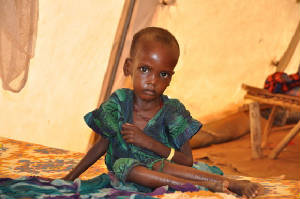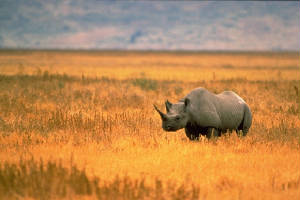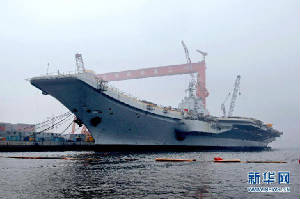|
Africa's famine:
The world's worst food crisis
in a half century

|
| Cate Turton/Department for International Development |
Millions of people face starvation as drought and warfare ravage East Africa
By Marc Lallanilla
July 27, 2011 — The worst food crisis the world has seen since the Great Chinese Famine of the late 1950s has East
Africa in its grip, and international aid groups are struggling to get help to more than 11 million people who might otherwise
die of hunger and malnutrition-related diseases.
As the hard-to-fathom famine spreads throughout the region, killing crops and wiping out herds of livestock, hundreds of
thousands of desperate people are swarming into squalid refugee camps. Here's an overview of the crisis:
What
areas are affected?
The whole of East Africa is suffering under severe drought conditions, but the hardest-hit
areas are Somalia, Ethiopia, Kenya, and parts of Uganda, Eritrea, and Djibouti. This triangular-shaped region, sometimes known
as the Horn of Africa, is now being called the "Triangle of Death" by aid workers who are stunned by the scale of devastation
they're witnessing.
How bad is this famine?
It's among the most severe humanitarian crises in decades, and it's
far from over. The numbers of dead and dying people are "shocking," says Mark Bowden of the United Nations, as quoted by Britain's
Financial Times. "We witnessed the sight of families stumbling into the [refugee] camps through the bitter Ogaden desert and
receiving their first nutritious meals in months. In most cases, that exodus took a week to 10 days of walking through the
desert. It was heart-wrenching," says a U.S. State Department spokesman.
What's causing this food crisis?
The entire region has been experiencing a prolonged drought
for many years, and some experts are blaming climate change. "We have had three severe droughts in the last decade in Kenya,
southern Somalia and Ethiopia," says Gareth Owen of Save the Children, as quoted by the Financial Times. "It used to be one
[drought] every 10 to 12 years. The cycle has got shorter."
Organized crime's ruthless
slaughter of wild animals

|
| USFWS |
By Marc Lallanilla
August 3, 2011 — Forget drugs and gun-running. Organized crime has found
a lucrative new way to make billions of dollars in the illegal trafficking of animal parts. As the journal Oryx reports,
a powerful network of international crime syndicates is whacking thousands of endangered animals, some of which are facing
extinction as a result.
Though conservationists are sounding alarms, law-enforcement officials are hamstrung
in their efforts to prevent ruthless, Mafia-style poachers from slaughtering animals on a scale never before seen. Four key
questions:
What kinds of animals are being killed?
Creatures
great and small. Elephants, tigers, and antelopes are being killed by the thousands every year. More than 330 rhinos were
killed in South Africa alone during 2010, nearly one a day. "At this rate, they will soon be wiped out," says anti-poaching
activist Kevin Bewick, as quoted by Discovery News. A menagerie of smaller, lesser-known animals are also threatened. Illegal
smuggling is increasing the rarity of both the pangolin, an endearing anteater about the size of a house cat, and the loris,
a little monkey weighing just three pounds.
Why are these wild animals so valuable?
Members of the burgeoning affluent class in China and other Asian countries are willing to spend billions each year on
these animals, sometimes as exotic pets, but mostly for their body parts. Rhino horns and tiger skulls, for example, are believed
to have aphrodisiac qualities or other "magical" properties. Bear paws, shark fins, loris feet, turtle shells, and other appendages
all fetch a high price on the international black market.
How
are criminals getting away with it?
Like drug smugglers and other organized criminals, those in the $10 billion-a-year
business of wild animal smuggling use an array of tools to thwart law enforcement agencies. Cells phones, forged shipping
documents, and e-commerce sites (the locations of which are difficult to track) are common among animal traders. Smugglers
also use hidden compartments in shipping containers and rapidly changing routes to keep police at bay.
For more, visit TheWeek.com
Infant Mortality Rates in Other Countries Improve,
but U.S. Rate Rises
By MARC LALLANILLA

Nov. 1, 2005 — What's causing the increased death rate among babies in the United States?
While the health of infants in many countries is improving, babies born in the United States now face an increased risk
of dying in the first year of life.
The U.S. infant mortality rate is on the rise for the first time since 1958, according to the Centers for Disease Control
and Prevention. In 2001, the infant mortality rate was 6.8 deaths per 1,000 live births — in 2002, the rate rose to
7.0. (2003 data is not yet complete.)
At the same time, other countries are improving their infant mortality rates to the point that they have surpassed the
United States. Cuba, for example, reported a lower 2002 rate than the United States at 6.3.
For the full story, go to ABC News
|
 |
|
|
|
 |
|
China's first aircraft carrier:
A military threat?
Is China's new aircraft carrier simply a training facility — or a challenge to the
U.S?
By Marc Lallanilla
August 11, 2011 — China's first aircraft carrier
began sea trials this week, a watershed moment in the country's rapid military growth. The still-unnamed ship is a repurposed
Soviet-era aircraft carrier that China purchased from the Ukraine in 1998.
Though some experts are concerned that China's long-term strategy
is to challenge U.S. military supremacy in Asia and elsewhere, China has repeatedly demurred, saying the ship will serve primarily
for training purposes. International defense experts, however, aren't convinced. Here's what you should know:

|
| Xinhuanet.com |
Do many other nations have aircraft carriers?
Yes,
including some that aren't recognized as military powers. "India, Thailand, Brazil, and Italy all have aircraft carriers,
too," says David Millar at The Huffington Post. "Yet no one fears Rome or Bangkok taking over the world anytime soon." Indeed,
"there should be no excessive worries or paranoid feelings on China's pursuit of an aircraft carrier, as it will not pose
a threat to other countries," says China's state-run Xinhua news agency.
Does China need an aircraft carrier?
Not
everyone thinks so. "We would welcome any kind of explanation that China would like to give for needing this kind of equipment,"
says U.S. State Department official Victoria Nuland, as quoted by ABC News. "We are prepared to be extremely transparent with
regard to U.S. military positions and equipment, and we'd like to have a reciprocal relationship with China. Transparency
in itself is a confidence-builder between nations."
Is China being secretive?
It seems
that way. When a Hong Kong-based travel company (a rather mysterious outfit that commentators believe was acting on behalf
of the government) bought the aging and gutted aircraft carrier for a mere $20 million in 1998, it promised to turn it into
a floating casino in Macao. Eyebrows were raised, however, after the ship was towed not to Macao but to Dalian — home
of the Dalian Naval Academy and a center of Chinese naval manufacturing. The cloak of secrecy, and the frequent denials from
Chinese officials, suggest they have an agenda at odds with Beijing's professed diplomatic intentions.
For more, visit TheWeek.com
'Health's Angels' Deliver Care by Motorcycle
Bikers Bring Health Care to Remote African Villages
By MARC LALLANILLA

Nov. 2, 2005 — Rural Africa is difficult terrain for health care workers. Villages are separated
by many miles. Roads are often washed out or potholed — if there are any roads at all.
In these isolated villages, the sick and injured cannot be seen by health care workers. In some cases, parents must walk
hours to the nearest clinic, carrying sick children on their backs.
And when vehicles are made available, maintenance is often overlooked. Replacement parts and skilled mechanics are in short
supply, and many vehicles end up as rusted hulks after only a few months of service.
When British reporter Barry Coleman visited Somalia in 1988, he saw motorcycles intended for use by the Ministry of Health
standing useless, idled by a lack of simple maintenance.
"It's simply not reasonable," said Coleman. "People were dying because nobody knew how to manage vehicles with internal
combustion engines."
For the full story, go to ABC News
As Bird Flu Spreads, Man's Best Friends Get a Second
Look

|
| (AP) |
By MARC LALLANILLA

March 12, 2006 — Pet
lovers around the world reacted with dread when a cat in Germany was discovered dead last month, a victim of bird flu. Alarmingly,
tests confirmed that the cat had died of the H5N1 strain of the virus, a form known to be deadly to humans.
As panic set in, various news reports stated that animal shelters in some
European countries were overwhelmed with healthy animals dropped off or abandoned by their owners. Several countries have
enacted quarantine zones where avian flu has been discovered, and German officials are enforcing a "cat curfew," requiring
owners to keep cats indoors in affected areas.
Is it merely panic, or are there serious risks to pets and to families with
cats and other pets? Is there anything pet owners can do to protect their pets and themselves from disease?
For the full story, go to ABC News
|
 |
|
|
|

